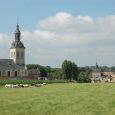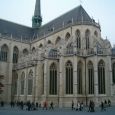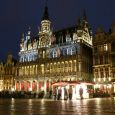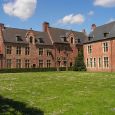Leuven
Advertisement
By Air
Land at Brussels International Airport, which services Europe, America, Africa and Asia. The airport is quite busy and also has a lot of low-cost carriers.
There is a train and bus station on the Airport itself - follow the signs! The Airport Express Train to Brussels leaves every 30 minutes, but there are direct trains to Leuven as well, every half hour on weekdays and every hour in the weekend. Taxis wait at the arrivals area.
By Bus
There are bus lines from the cities around Leuven (Brussels, Tienen, Aarschot, Mechelen, Diest and Wavre), but connections by train are usually faster and cost about the same. Buses are sometimes faster if you want to go to Herentals, Turnhout, Geel or other towns in the Campine region.
By Car
Leuven can be conveniently reached by car. The E40 highway runs from Brussels via Leuven to Liège, whereas the E314 highway links Leuven with the province of Limburg and with Maastricht and Aachen, at about 1 hour distance. The city has recently installed a Parking Guidance System that guides you to the larger parkings in the city centre. Look for the electronic signs on the city ring road.
Advertisement
Abdij vant Park
Southeast of Leuven lies the Premonstratensian Abdij t' Park, founded by Gottfried the Bearded in 1129; today most of the buildings date from the 16th and 18th C. The visitor is taken through two gateways and a long entrance, past the watermill and the estate to the courtyard of the prelate's house. The tour continues to the former abbots' palace, the chapter house with its mixture of Gothic and Renaissance styles, the library and the refectory, which both have fine stucco reliefs. The monastery church is of 12/13th C. origin, being redesigned in the 17/18th C.
St Peter's Church
Standing in the middle of the Grote Markt Sint-Pieterskerk is a prime example of Brabant Gothic. Begun in the 15th C. by van Vorst, continued by Keldermans and de Layens, it was more or less completed by Joost Massys. Original plans envisaged three towers on the west side and a main tower of 165m/541ft. This work was abandoned as the foundations were on sand and previous buildings had collapsed.
City Hall
The south side of the Grote Markt, a traffic junction where all the main streets converge in the middle of the town, is dominated by the stadhuis (city hall), built to plans by Sulpitius van Horst, begun by Jan Keldermans II and completed by Matthaeus de Rayens 1448-1463. It is one of the most magnificent secular buildings of late Gothic style in Europe and is decorated more lavishly than the city halls of Bruges, Brussels, Ghent and Oudenaarde. The building, which resembles a shrine, bears De Layens' distinctive architectonic trademark in the form of three narrow smaller towers at each gable end instead of a single tall central tower. Three rows of sculpture adorn the main facade and both side facades. The 236 figures which were only installed at the end of the 19th C. represent eminent personalities from the history of the town, whereas the consoles and bases of the niches were carved with reliefs from the Old and New Testament, some of them with medieval coarseness, when the stadhuis was built. Even the roof is richly decorated with small turrets.
Groot Begijnhof
From Naamsestraat head west through the Karmelietenberg and left into Schapenstraat to the picturesque Groot Begijnhof. This romantic complex, traversed by a tributary of the Dijle, was founded in the 13th C. and today comprises over 1,000 houses and a church; earlier it encompassed a hospital and a farmhouse. In the 18th C., when 300 béguines were still living in the béguinage, the houses were renovated with stepped gables, mullions and transoms, but the French Revolution brought a temporary halt. Only a few béguines returned afterwards. In 1962 the site was bought by the university and underwent extensive restoration to create student residences and lecture halls. Only the second cottage on the right past the entrance is still furnished as it was when the last béguine died in 1988. The early Gothic béguinage church Sint-Jan-de-Doper, built in the 13/14th C., serves the university community as a place of worship.
IJse Valley
The IJse, a tributary of the Dijle, flows through peaceful green countryside to the southwest of Leuven, where vegetables, especially chicory, are grown and grapes are pressed.
March - October
December - February -> 0(°C) - Spring
June - August -> 20(°C) - Summer
Advertisement







